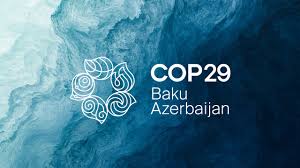The recently concluded COP29 climate summit in Azerbaijan made headlines for its agreements, controversies, and its implications for global climate action. While the $300 billion annual funding pledge by developed nations to aid developing countries represents progress, it has been met with skepticism over its adequacy and feasibility. Beyond finance, the summit touched upon critical issues such as carbon markets, energy transitions, and upcoming Nationally Determined Contributions (NDCs), setting the stage for further debates at COP30 in Brazil.
A Divisive Funding Agreement
One of COP29’s defining moments was the commitment by wealthy nations to provide $300 billion annually by 2035 to assist developing countries in coping with the climate crisis. This figure, though significant, pales in comparison to the $1.3 trillion identified as necessary for the most vulnerable nations. Critics, including India, Nigeria, and Malawi, expressed disappointment, labeling the amount insufficient and indicative of a lack of ambition. These reactions underscore the persistent gap between the urgency of climate adaptation needs and the political will of developed nations.
Despite its flaws, the agreement represents a step forward. The funds are expected to come from public and private sources, including multilateral development banks and private investors, aiming to address issues ranging from climate adaptation—such as flood-resistant infrastructure and sustainable agriculture—to renewable energy transitions. However, experts caution that the deal is only as good as its implementation. As Simon Stiell of UN Climate Change noted, the financial commitments must be honored fully and promptly to ensure their effectiveness.
The New Carbon Market: Hope or Hurdle?
A significant achievement of COP29 was the long-awaited agreement on global carbon market rules, nearly a decade in the making. This framework allows countries to buy and sell carbon credits, incentivizing emissions reductions and funding climate projects in developing nations. The dual system—bilateral trading under Article 6.2 and a global crediting mechanism under Article 6.4—aims to streamline efforts to meet climate goals.
While hailed as a pragmatic solution, critics argue that carbon markets could enable wealthier nations to “offset” emissions without substantial reductions at home. Ensuring transparency and accountability in these markets will be crucial to their success in genuinely reducing global emissions.
The Road Ahead: NDCs and COP30
The spotlight now shifts to the submission of updated NDCs by February 2025. These plans are vital in outlining how countries will reduce emissions and adapt to climate impacts. Some nations, including the UK and Brazil, have already been praised for their ambitious targets, but pressure remains on major emitters like the G20 to lead by example.
COP30 in Belem, Brazil, promises to be pivotal. Brazil’s leadership has pledged to prioritize just transitions and the goal of limiting global warming to 1.5°C. However, hosting the conference in a country expanding fossil fuel production has drawn criticism, reflecting broader tensions between economic development and climate responsibility.
A Mixed Outcome with Much at Stake
COP29 delivered incremental progress but left much to be desired. The funding pledge and carbon market agreement are steps forward, but their success hinges on robust implementation and global cooperation. As the world gears up for COP30, the challenge remains to bridge the gap between ambition and action, ensuring a sustainable and equitable future for all.




